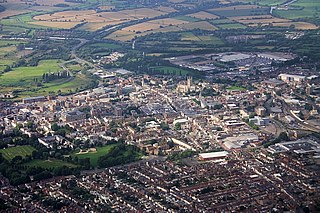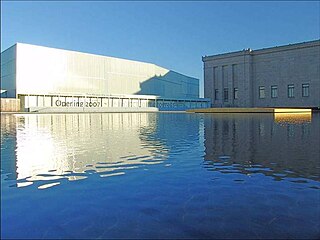
The Nelson-Atkins Museum of Art is an art museum in Kansas City, Missouri, known for its neoclassical architecture and extensive collection of Asian art.

Glevum was a Roman fort in Roman Britain that became a "colonia" of retired legionaries in AD 97. Today, it is known as Gloucester, located in the English county of Gloucestershire. The name Glevum is taken by many present-day businesses in the area and also by the 26-mile Glevum Way, a long-distance footpath or recreational walk encircling modern Gloucester.
Melvin Norman "Pat" Day, was a New Zealand artist and art historian.
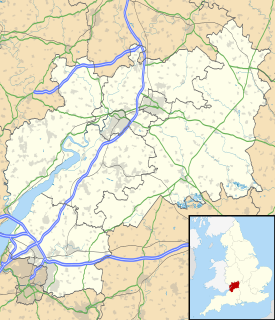
Arlingham is a village and civil parish in the Stroud District of Gloucestershire, England. The 2001 Census recorded a parish population of 410, increasing to 459 at the 2011 census. The parish contains the hamlets of Milton End, Overton and Priding The next parish to the east is Fretherne with Saul.
Gloucester was, from 1894 to 1974, a rural district in the administrative county of Gloucestershire, England. The district did not include the City of Gloucester, which was a separate county borough. In 1935 Gloucester RD was more than doubled in size.
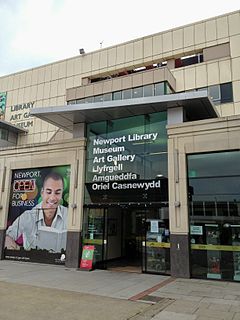
Newport Museum and Art Gallery is a museum, library and art gallery in the city of Newport, South Wales. It is located in Newport city centre on John Frost Square and is adjoined to the Kingsway Shopping Centre.

Herbert Art Gallery & Museum is a museum, art gallery, records archive, learning centre, media studio and creative arts facility on Jordan Well, Coventry, England.

David Prentice was an English artist and former art teacher. In 1964 he was one of the four founder members of Birmingham's Ikon Gallery.

Pete Hoida artist and poet, was born at Birkenhead in 1944. He is an abstract artist committed to the modernist tradition. He ceased writing circa 1985, after which he dedicated his time wholly to painting. After a hiatus of 25 years he resumed writing and has had poems published 2011–2016.
Elpida Hadzi-Vasileva is a Macedonian-born artist based in Brighton, UK. She has exhibited extensively and realised numerous commissions nationally and internationally, in gallery spaces, museums and within the public realm. Hadzi-Vasileva was selected by the Ministry of Culture to represent Macedonia at the 55th Venice Biennale in 2013, with Ana Frangovska, curator at the National Gallery of Macedonia.
Newnham railway station was a station serving the village of Newnham on Severn, Gloucestershire.

St Oswald's Priory was founded by Æthelflæd, daughter of Alfred the Great, and her husband Æthelred, ealdorman of Mercia, in the late 880s or the 890s.
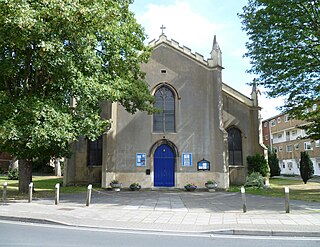
St Mary de Lode Church is a Church of England church immediately outside the grounds of Gloucester Cathedral. It is believed by some to be on the site of the first Christian church in Britain. The church is in the Diocese of Gloucester and Grade I listed by English Heritage. It has also been known as St. Mary Before the Gate of St. Peter, St. Mary Broad Gate and St. Mary De Port.
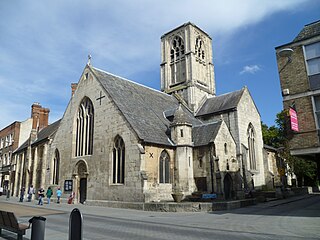
St Mary de Crypt Church, Southgate Street, Gloucester GL1, is an Anglican Church, which was first recorded in 1140 as The Church of the Blessed Mary within Southgate. It is in the Diocese of Gloucester and is located adjacent to the ruins of Greyfriars. It has also been known as Christ Church and St. Mary in the South. St Mary de Crypt is a Grade I listed building with English Heritage, reference number 1245611.

The Gloucester Old Bank was a British bank that operated between 1716 and 1838. It was founded in 1716 by James Wood. The bank was said to have been the oldest private bank in Britain, having survived the financial consequences of the Napoleonic Wars when many other banks went out of business. The claim was wrong as both C. Hoare & Co and Child & Co. were founded earlier, it was, however, one of the oldest banks in Britain in the nineteenth century.

Ladybellegate House, 20 Longsmith Street, Gloucester GL1 2HT, is a Grade I listed building with English Heritage, reference number 1245726.
Carolyn Mary Heighway MA FSA is an archaeological consultant to Gloucester Cathedral and the owner, with her husband Richard Maurice Bryant, of Past Historic, a company which specialises in the design and production of archaeological books and journals as well as exhibitions. She was a founder trustee of Cotswold Archaeology in 1989, and is a Fellow of the Society of Antiquaries of London. She is a former President of the Bristol and Gloucestershire Archaeological Society.

Suzanne Goldberg (1940–1999) was a New Zealand painter, born in Auckland, New Zealand.





